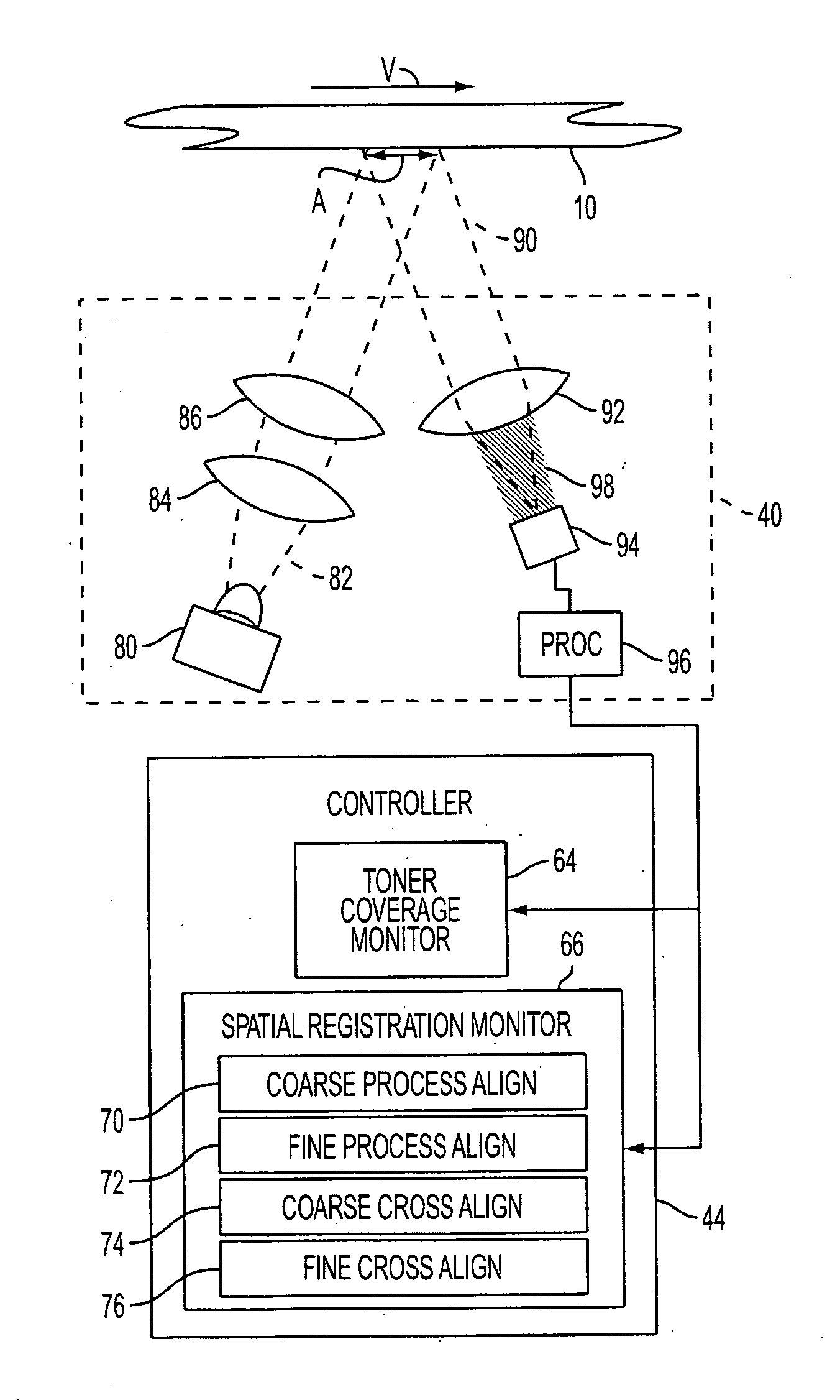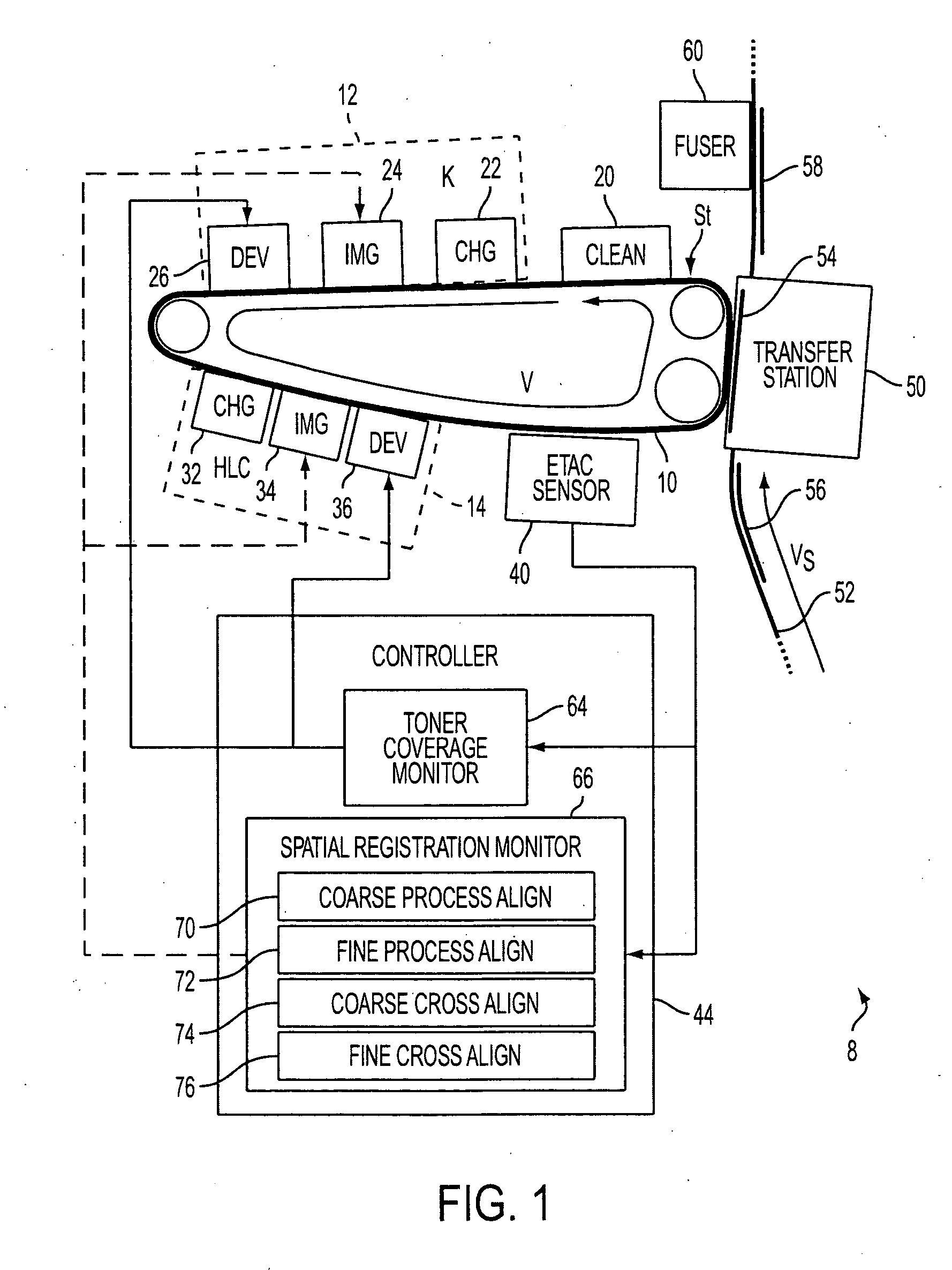Color mis-registration measurement using an infra-red color density sensor
a color density sensor and color mis-registration technology, applied in the printing arts field, can solve the problems of limiting the accuracy of manual spacing measurement, time-consuming manual approaches, waste of paper or other print media,
- Summary
- Abstract
- Description
- Claims
- Application Information
AI Technical Summary
Benefits of technology
Problems solved by technology
Method used
Image
Examples
Embodiment Construction
[0020] With reference to FIG. 1, a xerographic printing system 8 includes a photoreceptor in the form of a moving photoreceptor belt 10 driven by gears, pulleys, or so forth in a direction v that is counterclockwise in the viewing direction of FIG. 1. The illustrated example xerographic printing system 8 includes two toner development systems: a main black (K) toner development system 12, and a secondary highlighting color (HLC) toner development system 14. While the example printing system includes two toner development systems 12, 14, it is to be appreciated that the spatial registration and toner coverage measurement and calibration techniques described herein are readily applied to printing systems with three, four, or more toner development systems. For example, the spatial registration and toner coverage measurement and calibration techniques described herein are readily applied to CMYK color printers having four toner development systems. Moreover, the example photoreceptor 1...
PUM
 Login to View More
Login to View More Abstract
Description
Claims
Application Information
 Login to View More
Login to View More - R&D
- Intellectual Property
- Life Sciences
- Materials
- Tech Scout
- Unparalleled Data Quality
- Higher Quality Content
- 60% Fewer Hallucinations
Browse by: Latest US Patents, China's latest patents, Technical Efficacy Thesaurus, Application Domain, Technology Topic, Popular Technical Reports.
© 2025 PatSnap. All rights reserved.Legal|Privacy policy|Modern Slavery Act Transparency Statement|Sitemap|About US| Contact US: help@patsnap.com



